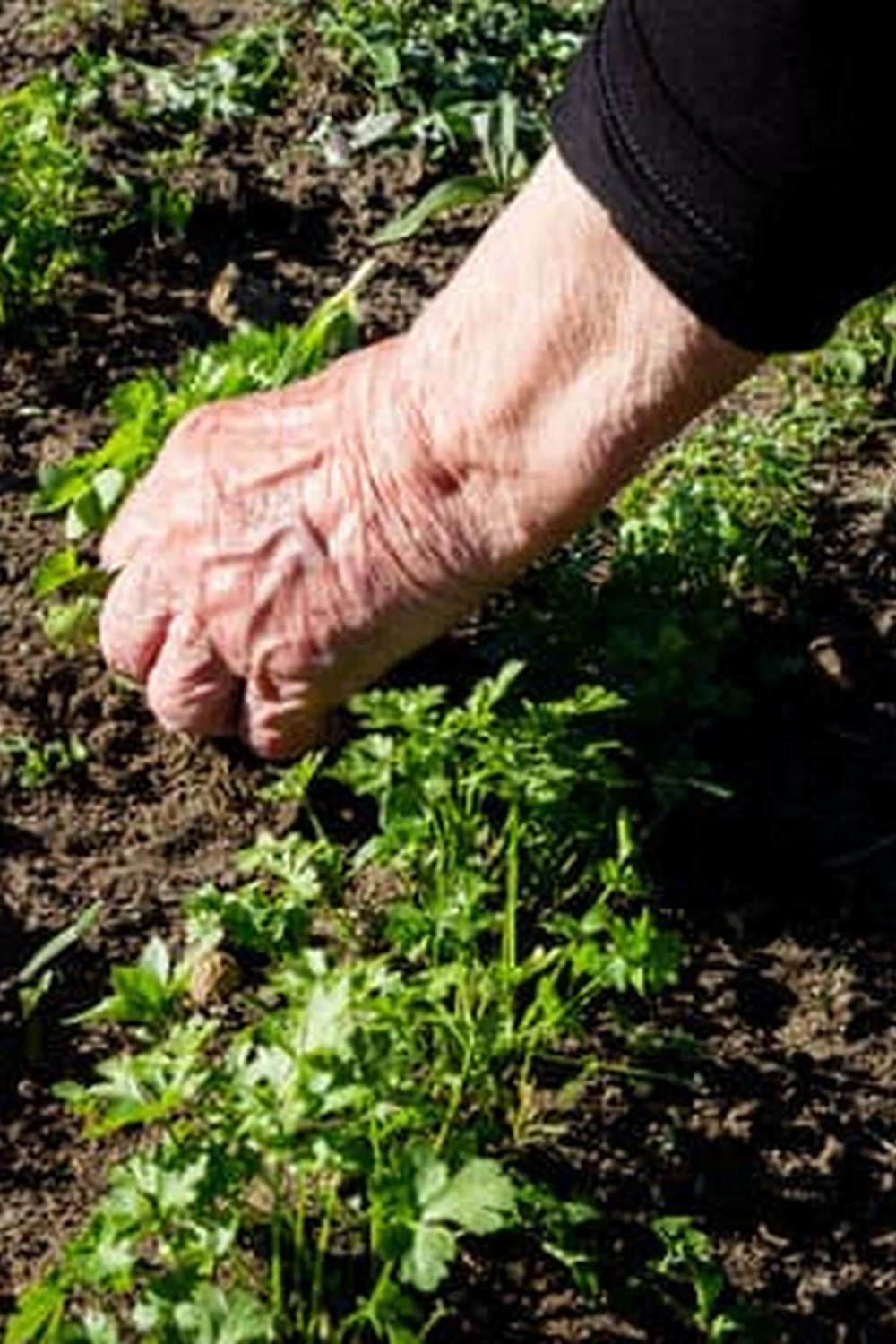As technology continues to revolutionize various aspects of our lives, it comes as no surprise that it has also made its way into the realm of gardening. With the increasing popularity of vegetable gardening, Android users now have access to a wide range of gardening apps designed specifically to enhance their gardening experience. These vegetable gardening apps offer a wealth of features and information that can help both novice and experienced gardeners thrive in their endeavors.
Gone are the days when gardeners had to rely solely on books and manual labor to cultivate their vegetables. Today, with just a few taps on an Android device, you can delve into a world of information and resources that will support your journey as a gardener. These mobile apps are quickly becoming indispensable tools as they provide convenient access to plant identification databases, weather tracking services, reminders for important tasks, and expert advice from seasoned gardeners.
By incorporating these vegetable gardening apps into your routine, you can save time and improve productivity in your garden. With features such as plant care guides and personalized recommendations based on your location and garden preferences, these apps have proven to increase success rates among users.
Whether you are looking to grow your own vegetables for the first time or wanting to take your existing garden to new heights, these apps will empower you with knowledge and tools needed for successful cultivation.
Benefits of Using Vegetable Gardening Apps on Android
Vegetable gardening apps on Android provide numerous benefits and advantages for gardeners of all skill levels. These apps have become increasingly popular due to their ability to enhance the vegetable gardening experience. By utilizing these apps, users can access a wide range of features and tools that can save time, improve productivity, and increase success rates in their gardens.
One of the key benefits of using vegetable gardening apps on Android is the feature of plant identification. These apps often have extensive databases that allow users to identify different plants simply by taking a photo or describing its characteristics. This tool is particularly useful for beginners who may not be familiar with all the plant varieties they are growing.
Furthermore, many gardening apps for Android offer weather tracking features. Gardeners can input their location, and the app will provide real-time weather updates as well as forecasts. This information is invaluable because it allows gardeners to make informed decisions about when to water, fertilize, or protect their plants from harsh conditions.
Additionally, vegetable gardening apps on Android often include reminders and notifications. Users can set reminders for important tasks such as watering schedules or planting dates. These reminders help ensure that gardeners stay on top of their tasks and don’t miss any critical deadlines.
Moreover, these apps often provide expert advice from experienced horticulturists and gardeners. Users can access articles, videos, tutorials, and forums within the app to learn new techniques, troubleshoot problems, and gain valuable insights into best practices.
In summary, using vegetable gardening apps on Android devices offers numerous benefits for both novice and experienced gardeners alike. From plant identification to weather tracking features, reminders to expert advice – these apps significantly enhance the gardening experience by saving time, improving productivity, increasing success rates in vegetable gardens.
| Benefits | Features |
|---|---|
| Plant identification | Allows users to identify plants by taking photos or describing their characteristics |
| Weather tracking | Provides real-time weather updates and forecasts specific to the user’s location |
| Reminders and notifications | Allows users to set reminders for important gardening tasks such as watering schedules and planting dates |
| Expert advice | Offers access to articles, videos, tutorials, and forums for guidance from experienced gardeners and horticulturists |
Top 5 Vegetable Gardening Apps for Android in 2021
In this section, we will explore the top five vegetable gardening apps available on Android devices in 2021. These apps offer a range of features and functionalities to help gardeners enhance their gardening experience and achieve successful results. Whether you are a beginner looking for guidance or an experienced gardener wanting to optimize your efforts, these apps have something to offer.
- Gardenize: Gardenize is a comprehensive gardening app that allows users to create and manage their virtual garden spaces. With its user-friendly interface, Gardenize makes it easy to record plant information, track progress, and set reminders for watering and fertilizing. The app also provides tips and guidance based on individual plants’ specific requirements, ensuring optimal care.
- PlantNet: If you’ve ever come across a plant but couldn’t identify it, PlantNet is the perfect app for you. Using image recognition technology, PlantNet helps users identify various plants by analyzing uploaded photos. This feature is particularly helpful when planning your vegetable garden or encountering unfamiliar plants during outdoor adventures.
- Veggie Garden Planner: Designed specifically for vegetable gardening enthusiasts, Veggie Garden Planner offers an array of tools and resources to plan and manage your vegetable garden efficiently. Users can access a database of different vegetables along with planting schedules, spacing recommendations, and harvest timelines. The customizable planner also allows you to design your garden layout according to your preferences.
- My Soil: Understanding soil composition is crucial for successful gardening outcomes. My Soil helps users analyze their soil’s health by providing information about its pH levels, nutrients present, and other factors affecting plant growth. With this knowledge at hand, gardeners can make informed decisions regarding soil amendments or the selection of suitable crops.
- Vegetable Tree – Gardening Guide: Vegetable Tree serves as a comprehensive guide for growing various vegetables at home successfully. It offers detailed information on each plant’s requirements from sowing seeds to harvesting produce. The app provides useful recommendations for optimal planting times, watering needs, and pest control measures to help users achieve healthy and bountiful harvests.
These are just a few of the top vegetable gardening apps available on Android in 2021. Each app offers its unique set of features and functionalities to cater to different gardening styles and needs. Exploring these apps can revolutionize your vegetable gardening experience and take your skills to the next level.
Choosing the Right Vegetable Gardening App for Your Needs
When it comes to selecting a vegetable gardening app for your Android device, there are several factors to consider. With an abundance of options available in the app store, it can be overwhelming to choose one that suits your specific needs. However, by taking into account certain criteria and following a few tips, you can find the perfect app that will enhance your vegetable gardening experience.
- Ease of Use: One of the most important aspects to consider when choosing a vegetable gardening app is its user-friendliness. Look for an app with intuitive navigation and a clean interface that makes it easy to understand and use all its features. The app should have clear instructions and minimal setup requirements so that even beginners can start using it without any hassle.
- Specific Features: Different vegetable gardening apps offer various features to cater to different gardeners’ needs. Determine which features are essential for you based on your gardening style and goals. Some popular features you may want to look for include plant identification tools, personalized calendars or reminders for planting and maintenance tasks, access to expert advice or forums, and weather tracking functionalities.
- Compatibility: Before downloading a vegetable gardening app, make sure it is compatible with your Android device’s operating system version. Check if the app is regularly updated by the developers to ensure compatibility with new software updates as well.
- User Reviews: Reading reviews from other users can provide valuable insights into an app’s performance and reliability. Look for feedback on the overall user experience, functionality, accuracy of information provided, and customer support provided by the developers.
To help you make an informed decision, here are some popular vegetable gardening apps for Android:
- Garden Answers Plant Identifier: This app uses advanced image recognition technology to identify plants accurately. It also provides detailed information about each plant species.
- GrowIt.: With GrowIt., you can connect with a community of gardeners in your area, share photos of your plants, and get advice from experienced users.
- iScape: While primarily designed for landscaping, iScape can also be used for planning and visualizing vegetable gardens. Use the app’s augmented reality feature to see how your garden would look before planting.
- My Vegetable Garden: This app allows you to plan and track your vegetable garden, set reminders for specific tasks, access a plant database, and receive gardening tips based on your location.
- The Old Farmer’s Almanac: A well-known resource in the gardening world, this app provides weather forecasts, planting calendars, guides to companion planting, and helpful articles.
By considering the factors mentioned above and exploring the features offered by each app, you can choose a vegetable gardening app that best suits your needs and preferences. Remember that finding the right app may require some trial and error but once you find the perfect fit, it will simplify and optimize your vegetable gardening experience on your Android device.
Step-by-Step Guide
Downloading and Installing the App
To get started with a vegetable gardening app on your Android device, the first step is to download and install the app from the Google Play Store. Open the Play Store and search for “vegetable gardening apps.” A list of available apps will appear, so choose one that best suits your needs.
After selecting an app, click on the “Install” button. The app will then begin to download and install automatically. Once the installation is complete, you can find the app in your app drawer or on your home screen.
Setting Up Your Profile
After installing the vegetable gardening app, it’s time to set up your profile. Open the app and follow the prompts to create an account or sign in if you already have one. This step is important as it allows you to personalize your experience within the app.
Once you have signed in, you may be prompted to provide some basic information about yourself and your gardening preferences. This can include details such as your location, garden size, and types of vegetables you plan to grow. Providing this information will help the app tailor its recommendations and notifications specifically for your needs.
Navigating Through the App
Now that you have set up your profile, you can start exploring all the different sections of the vegetable gardening app. Most apps will have easy-to-use navigation menus or icons located at either the top or bottom of the screen.
Some common sections you can expect to find in a vegetable gardening app include:
- Dashboard: Here, you’ll find an overview of your current garden status, reminders for tasks that need attention, upcoming weather forecasts, and any personalized recommendations based on your preferences.
- Plant Library: This section contains a comprehensive database of various vegetable plants along with detailed information about each plant’s care requirements, growing seasons, diseases they may be prone to, and more. You can use this feature to gain knowledge about different plants and make informed decisions for your garden.
- Task Manager: Many gardening apps have a task manager or to-do list feature that allows you to schedule and track different gardening tasks. From planting seeds to harvesting crops, this section can help you stay organized and keep track of what needs to be done.
- Community/Forum: This section provides access to a community of fellow vegetable gardeners. Here, you can ask questions, seek advice, share tips and tricks, and even showcase your garden’s progress. It’s a great way to connect with like-minded individuals and learn from their experiences.
Remember to explore all the sections of the app thoroughly so that you can make the most out of its features and functionalities. Each app may have its own unique offerings, so take some time to familiarize yourself with all the available options.
By following this step-by-step guide, you should now be well-equipped to get started with a vegetable gardening app on your Android device. Remember that each app may have its own unique setup process, but these general steps should provide a foundation for your journey into digital gardening assistance.
Advanced Tips and Tricks for Optimizing Your Vegetable Gardening App Experience
Utilizing Personalized Features
One of the key advantages of vegetable gardening apps on Android is the ability to personalize your gardening experience. These apps often offer features that allow you to input specific details about your garden, such as the type of vegetables you are growing, their planting dates, and any specific care instructions they require. By utilizing these personalized features, you can ensure that the app provides you with targeted reminders and notifications that are tailored to your garden’s needs.
Additionally, some apps offer tracking capabilities that allow you to monitor the progress of your plants over time. You can record important data such as growth rates, flowering periods, and harvest yields. This information can be incredibly valuable in analyzing what works best for your garden and making informed decisions for future seasons. By taking advantage of these personalized features, you can optimize your vegetable gardening app experience and increase your chances of a successful harvest.
Accessing Additional Resources
Vegetable gardening apps on Android often come packed with a wealth of additional resources that can further enhance your gardening knowledge and skills. These resources may include articles, tutorials, videos, or even access to online communities where you can connect with other gardeners and exchange tips and advice.
Take the time to explore and utilize these additional resources offered by the app. They can provide valuable insights into various topics such as pest control methods, crop rotation techniques, companion planting suggestions, and more. By tapping into these resources, you can expand your understanding of vegetable gardening and become a more knowledgeable gardener.
Managing Garden Tasks
One of the biggest benefits of using a vegetable gardening app on Android is its ability to help you stay organized with your garden tasks. Many apps offer task management features where you can create a to-do list for each day or week based on the needs of your plants. These tasks may include watering schedules, fertilizing reminders, or even pest control actions.
To optimize your gardening app experience, make sure to utilize the task management features effectively. Set reminders for yourself and check off tasks as you complete them. This will help you stay on top of your gardening chores and ensure that no important tasks slip through the cracks. By managing your garden tasks efficiently, you can improve productivity and maximize the success of your vegetable garden.
Testimonials
Testimonials: Real Users Share Their Success Stories with Vegetable Gardening Apps on Android
Vegetable gardening apps for Android have revolutionized the way people approach and experience gardening. Real users have found success and achieved impressive results through the use of these innovative apps. Here are some inspiring testimonials from individuals who have witnessed the transformative power of vegetable gardening apps on their Android devices.
User 1:
“I had always struggled with identifying different plants in my garden. With the help of a vegetable gardening app on my Android device, I can now easily identify any plant just by taking a picture. This has significantly improved my plant care routine as I now know exactly what each plant needs. My garden has thrived ever since.”.
User 2:
“One of the biggest challenges in vegetable gardening is keeping track of weather conditions. Thanks to an Android gardening app, I receive real-time weather updates and alerts tailored to my specific geographical location. It has saved me from many unexpected storms and allowed me to protect my plants effectively.”.
User 3:
“As a beginner gardener, I often struggled with remembering important tasks like watering, fertilizing, and pest control. The reminder feature in my favorite vegetable gardening app has been a game-changer for me. Now I receive timely reminders that keep me on top of all my garden tasks, ensuring healthy and thriving plants.”.
These testimonials highlight just a few of the incredible benefits that vegetable gardening apps on Android offer to users. From plant identification to weather tracking and helpful reminders, these apps truly elevate the gardening experience by empowering individuals with knowledge and support.
Conclusion
In conclusion, vegetable gardening apps for Android devices have revolutionized the way enthusiasts engage in their gardening activities. With the increasing popularity of these apps, gardeners now have easy access to a wide range of features and tools that can enhance their vegetable gardening experience. By leveraging the power of technology, users can save time, improve productivity, increase success rates, and ultimately maximize their crop yields.
Throughout this article, we explored the benefits of using vegetable gardening apps on Android and provided a comprehensive list of the top five apps available in 2021. Each app offers unique features, user-friendly interfaces, and functionality tailored to meet different gardening needs. By evaluating factors such as ease of use, specific features, compatibility, and user reviews, readers can determine the most suitable app for their requirements.
We also provided a step-by-step guide on getting started with a vegetable gardening app on Android. From downloading to setting up the app and navigating its various sections, readers were equipped with the necessary knowledge to seamlessly integrate these apps into their gardening routine. Additionally, we shared advanced tips and tricks for optimizing the app experience and showcased real-life testimonials from users who have achieved success with their crops using these innovative tools.
In closing, vegetable gardening apps for Android bring immense potential to gardeners seeking to simplify and optimize their practices. We encourage readers to explore different apps available in the market and experiment with various features that suit their preferences. By embracing technology and leveraging these powerful tools, enthusiasts can embrace a more efficient approach to vegetable gardening while enjoying increased yields and successful garden management.
Frequently Asked Questions
Is there a free gardening app?
Yes, there are several free gardening apps available for both Android and iOS devices. These apps can be easily downloaded from the respective app stores. Some popular free gardening apps include GardenTags, Gardenize, and iScape.
Is seed to spoon app free?
The Seed to Spoon app is indeed free to download and use. This app aims to assist gardeners by providing them with helpful information about growing their own fruits and vegetables. It offers tips on planting, watering, fertilizing, pest control, harvesting, and more. Additionally, it includes a plant database where users can search for specific plants and find relevant details.
How do I map my vegetable garden?
Mapping your vegetable garden can be a useful way to keep track of the layout and placement of different plants in your garden bed or plot. To map your vegetable garden, you can use various methods depending on your preference and resources available. One simple option is to draw a diagram on paper or use an online tool that allows you to digitally create a map of your garden’s layout.
Be sure to include measurements and labels for each plant or row for easy reference later on. This mapping process can help with planning future plantings and managing crop rotations effectively.

If you’re looking to get into vegetable gardening, or are just looking for some tips on how to make your current garden better, then you’ve come to the right place! My name is Ethel and I have been gardening for years. In this blog, I’m going to share with you some of my best tips on how to create a successful vegetable garden.





